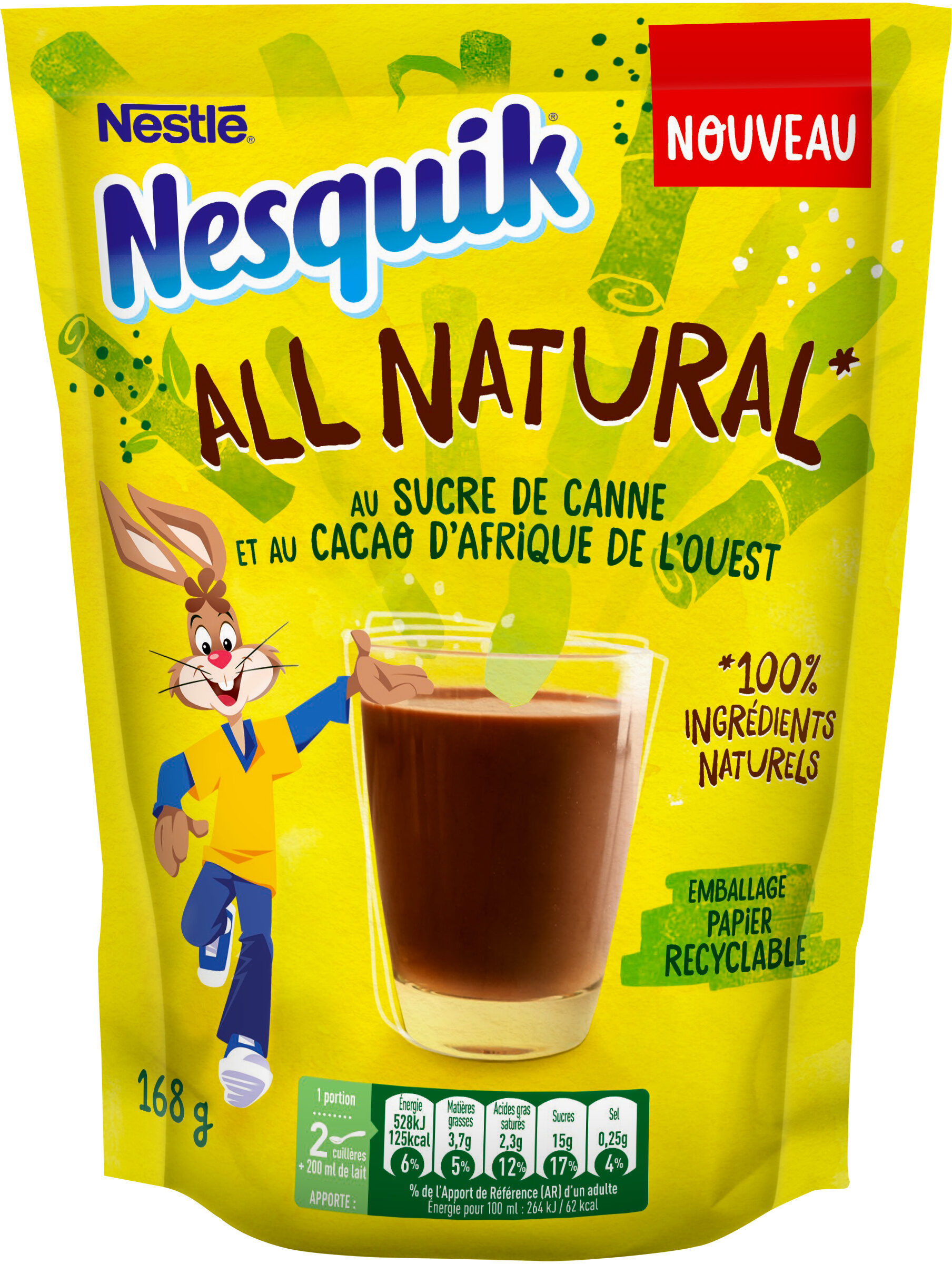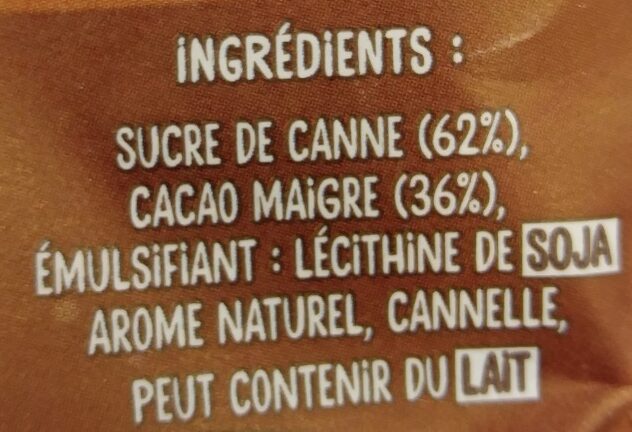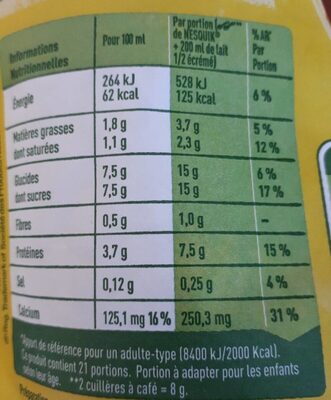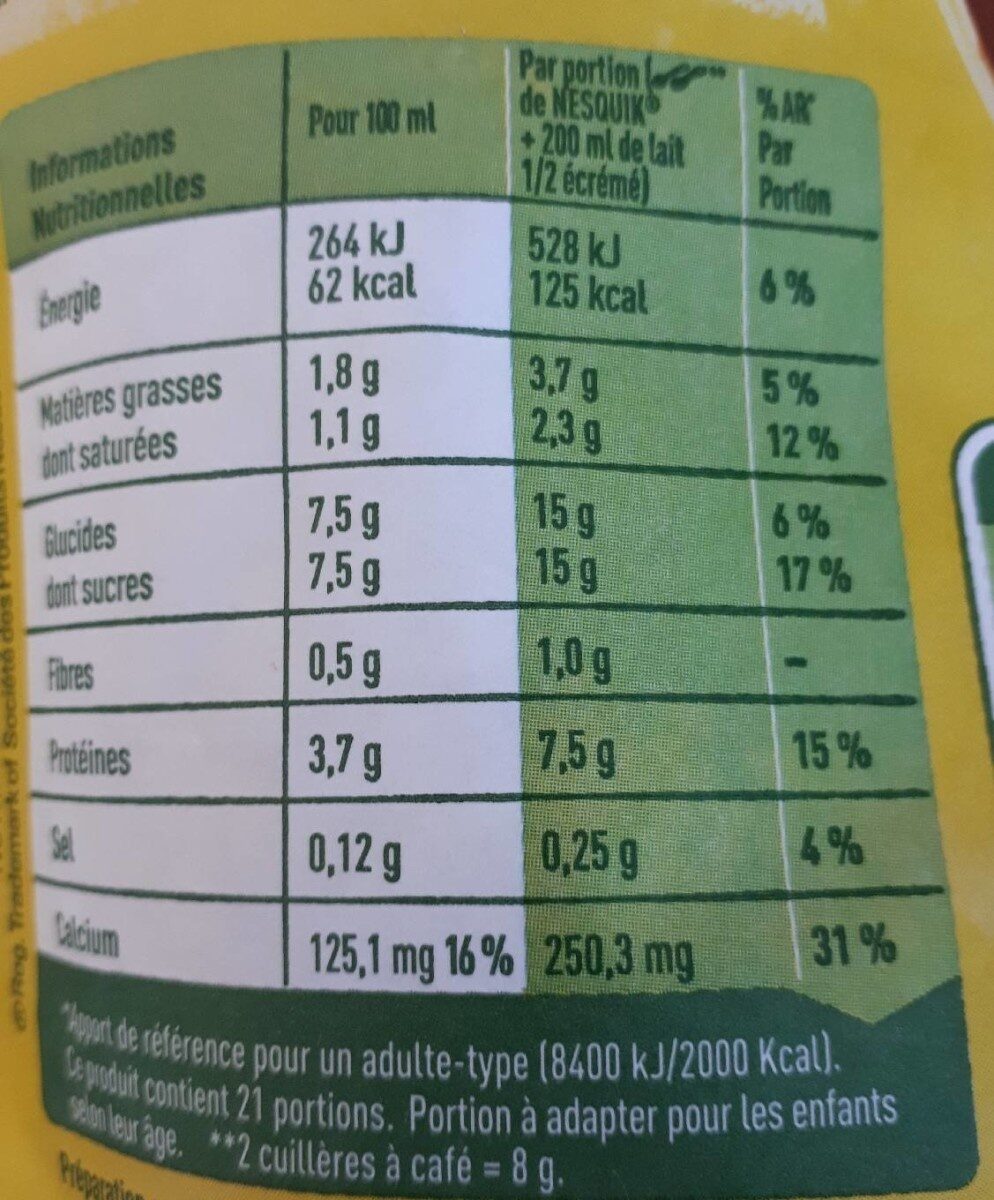NESQUIK ALL NATURAL 168g - Nestlé - 168 g
This product page is not complete. You can help to complete it by editing it and adding more data from the photos we have, or by taking more photos using the app for Android or iPhone/iPad. Thank you!
×
Some of the data for this product has been provided directly by the manufacturer NESTLE FRANCE. - Customer service: Contact form 0 809 400 412 (service gratuit + prix de l'appel)
Barra-kodea: 7613036825658 (EAN / EAN-13)
Izen arrunta: Préparation en poudre instantanée pour boisson cacaotée
Kopurua: 168 g
Ontziratzea: en:Bag, en:Box, fr:Sachet en papier recyclé
Kategoriak: en:Beverages, en:Cocoa and its products, en:Cocoa and chocolate powders, en:Instant beverages, en:Chocolate powders
Etiketak, ziurtagiriak, sariak:
en:No gluten, en:No artificial flavors, en:Green Dot, en:No colorings, en:No flavors, Triman

Origin of the product and/or its ingredients: Origine du produit fini : Hongrie # Origine "Fèves de cacao" : Afrique de l'ouest
Origin of ingredients: fr:Cacao d'Afrique de l'Ouest
Dendak: Carrefour market, Carrefour
Saltzen diren herrialdeak: Belgika, Frantzia, Alemania, Italia, Espainia
Matching with your preferences
Ingurumena
Carbon footprint
Ontziratzea
Transportation
Other information
Preparation: Versez 2 cuillères à café de Nesquik dans 200 ml de lait chaud ou froid. Remuez et c'est prêt !
Conservation conditions: A conserver dans un endroit frais et sec.
Customer service: Nestlé France, 34-40 rue Guynemer 92130 Issy-les-Moulineaux
Report a problem
Datuen iturria
The manufacturer NESTLE FRANCE uses Equadis to automatically transmit data and photos for its products.
Product added on by kiliweb
Last edit of product page on by roboto-app.
Produktuaren orria -gatik editatua alex-off, big-brother, corrigo, davidepio, dea, didierg, ecoscore-impact-estimator, elcoco, fiffi, giuliacrepaldi, inf, moon-rabbit, musarana, nestle-france, openfoodfacts-contributors, org-nestle-france, packbot, rosamary, scanbot, stephane, tacite-mass-editor, thaialagata, yuka.UnA4WUc1OWVnNkJUdXN3dzNCS00xK2xsNXBpYmNHMjhkZHNLSWc9PQ, yuka.VExvOFNMUWZtNmtMbnZjZDdqL2wyZnRjMklQellGaW5KL1VLSWc9PQ, yuka.Vko0UU1ZaFluYVVXbjhJenhoM0p4NHRZNXA2QVJsNndKOFFiSVE9PQ, yuka.WXBvTUg1VmVqTVVMdzh3Q3hFMzA2UE5KeTdpd1RHYVlLdk13SVE9PQ, yuka.WXZzT0lQZ2tnTWRheGNNVTVCZjgzb0pZd2JLSVdtV1JJc2hOSVE9PQ, yuka.ZmZsZlBmNHYvZHNIcHZNMzcwUHp5dlJ1bDYydVgwT2xDL0FMSWc9PQ, yuka.sY2b0xO6T85zoF3NwEKvlkJ5cMHf_w7bJSHtmESu4_eWcIXMY_xv4bXdNqg.











